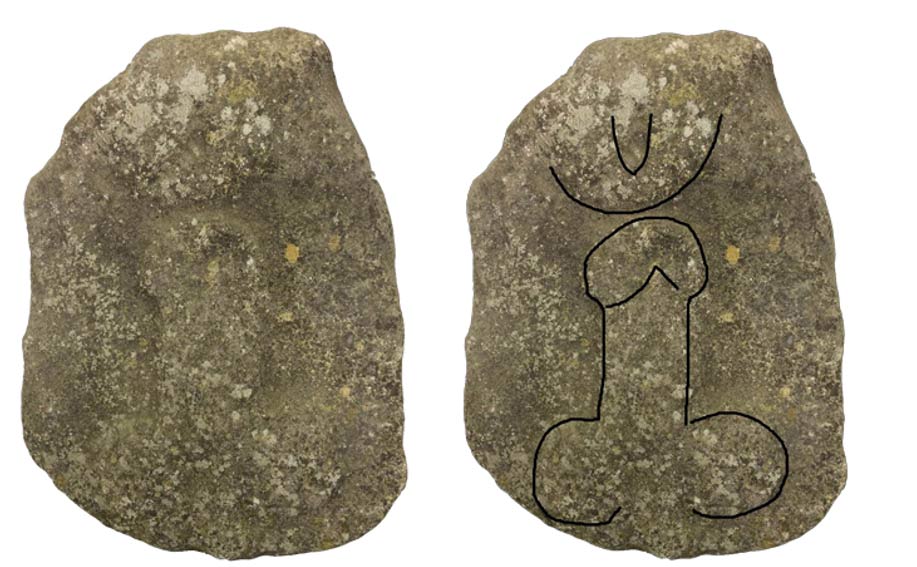Ancient Roman Garden Ornament of a Phallus Revealed to the Public
The ancient Romans were obsessed with phallic images in art and architecture. Now, The Collection, a museum in Lincoln, England, will put on display a Roman phallus carved in stone that a family in Braceby, Lincolnshire, had used as a garden ornament for 20 years.
The family has donated it after digging up the 15 inch (38 cm) long stone in 1995. They’re moving away and wanted the carving to remain in Lincolnshire.
The phallus is pointing toward a figure that The Collection curator Anthony Lee told the BBC is either meant to represent a vagina or an evil eye. In ancient Rome phalluses often were depicted near the evil eye; the phallus was thought to give protection from it. The figure found in Braceby was probably originally inserted into a wall, Lee said.
“It’s a prevalent enough theme in Roman art and archaeology to be considered an obsession,” Lee told the BBC. He continued:
Although pornographic imagery clearly existed, phallic imagery was not intended for this purpose. The phallus was a symbol both of protection and of promoting good fortune, and therefore was an entirely appropriate image to wear as jewelry or to carve on a city wall or important building, even to hang around your newborn baby’s neck.

Ancient terracotta sculptures of private parts: penises, a breast and, on the right, a womb at the Museo Archeologico Nazionale of Naples. (Public Domain)
The Collection has several other phalluses, including some made of bone and copper fashioned into pendants, a ceramic spout, and a carving of a man astride a winged phallus.
Ancient Origins reported in June about a fresco from Pompeii that depicted the god Priapus with a huge erection. A doctor said the painting depicts the rustic god with severe shut phimosis—a painful, unhygienic condition where the foreskin of the penis cannot be retracted.

A fresco of Priapus from the House of Vettii in Pompeii—the hapless Priapus must have been very unhappy indeed. (Public Domain)
A fresco in the House of Vettii in the ancient ruins of Pompeii shows the god weighing his huge member against a bag of gold. In Greek mythology, Priapus was a minor rustic fertility god, protector of livestock, fruit plants, gardens, and male genitalia. He is usually depicted with an oversized, permanent erection, which gave rise to the medical term priapism, a painful medical condition in which the erect penis does not return to its flaccid state.
Dr. Francesco M. Galassi wrote in the journal Urology that in rural Italy, images of Priapus were often shown with shut phimosis as a way to ward off the condition in the male family members. Even in more recent times, he wrote, wax phallic images continued to show the condition as an apotropaic measure. Apotropaic means it has the power to ward off evil.
The Collection’s Lee is not the first person to point out ancient Rome’s phallic preoccupation. On the website CreateDebate, a writer says:
One of the more astonishing aspects of Greco-Roman culture was their acute obsession with sex organs, especially male genitalia. Phallic worship is known to have been practiced by a number of different Pagan religions, but none could ever match the emphasis that the Greco-Roman builders and artists had with the penis.
Featured image: The outline of the phallus can be faintly seen in the left image. It is from Roman times, was found in Lincolnshire in 1995, and will go on display in a Lincoln, England, museum. The object is also thought to depict a vagina or an evil eye. (Photo by The Collection)
By Mark Miller



















